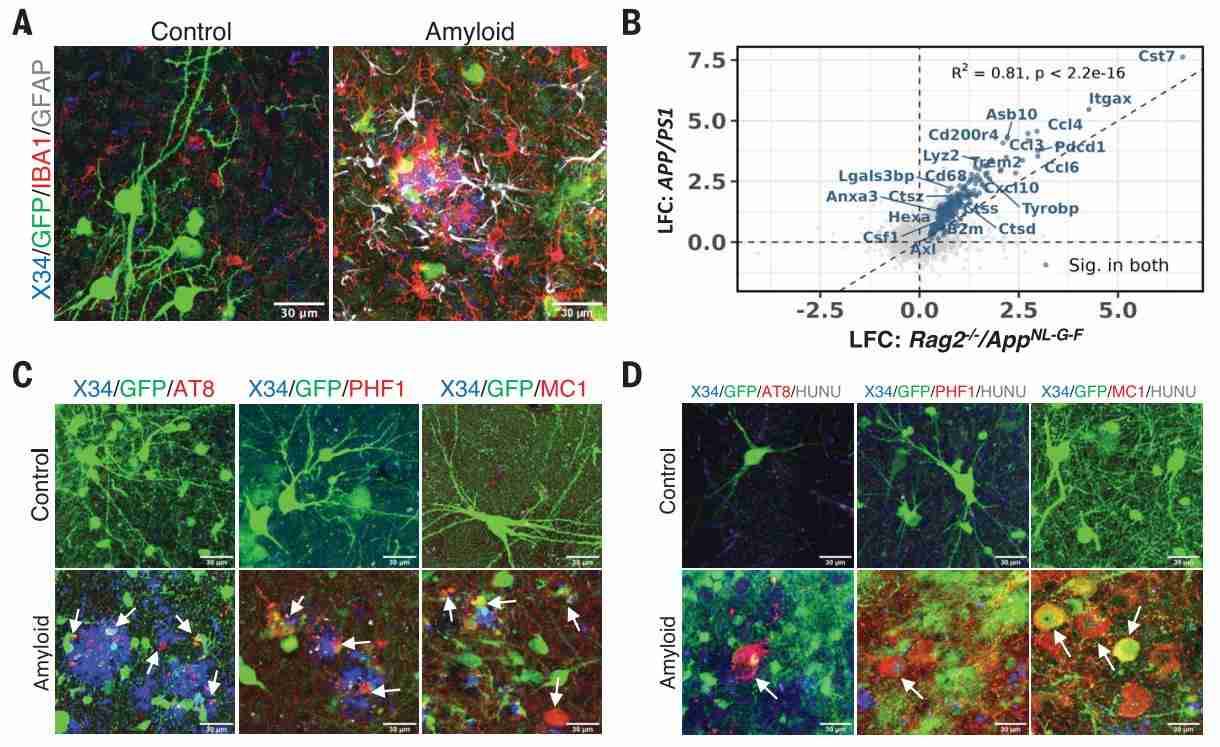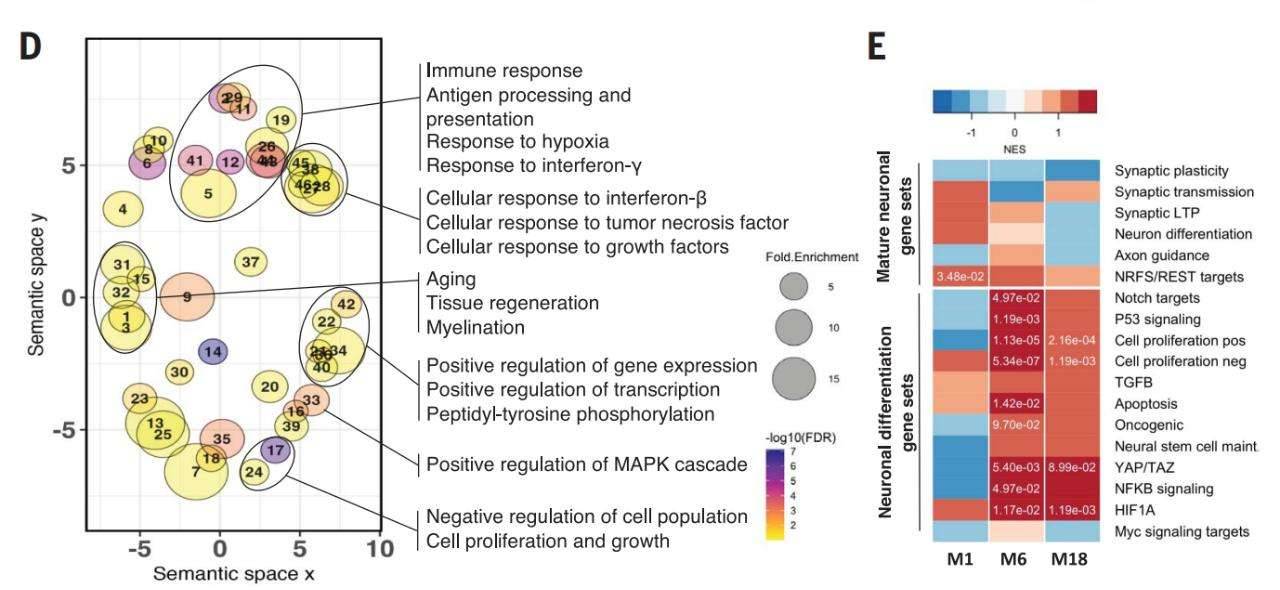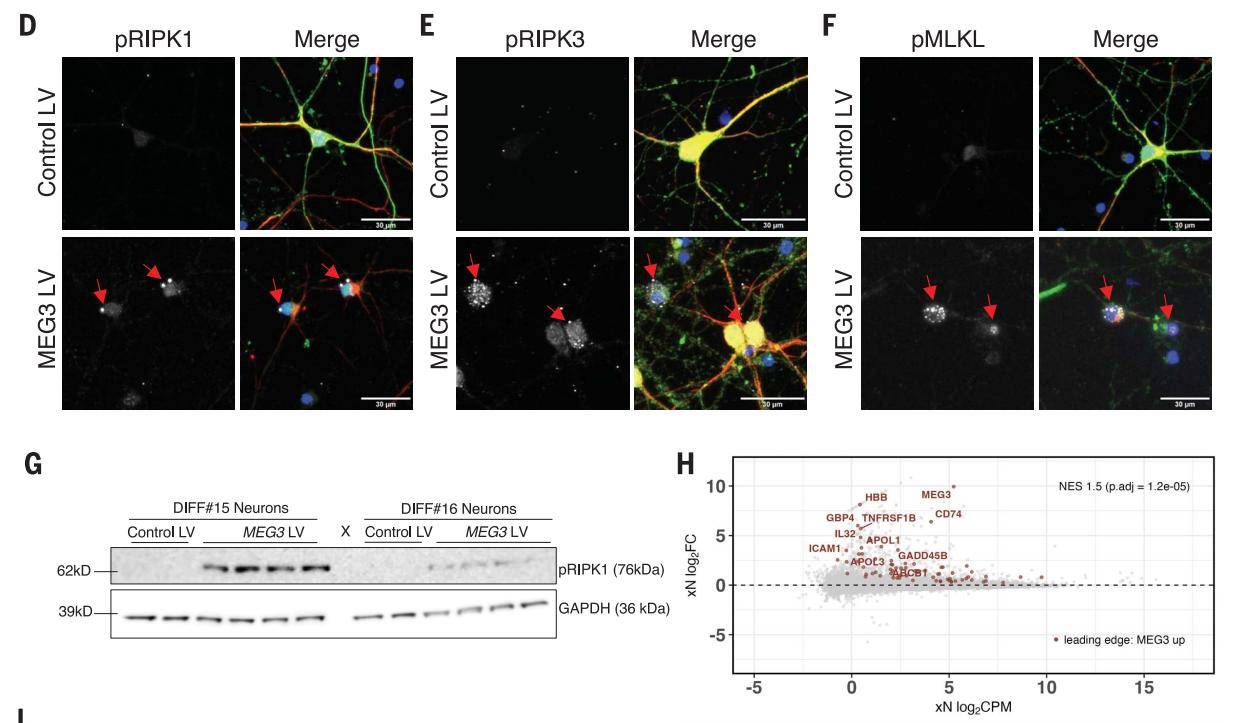Alzheimer's disease, also known as "dementia," stands as the most prevalent neurodegenerative condition. Individuals grappling with Alzheimer's disease typically manifest symptoms encompassing memory decline, diminished learning capacity, emotional instability, and the loss of motor skills. These challenges make self-care a formidable task, casting a substantial burden not only on affected individuals but also on their families and society at large.
A recent article, featured in Science, has shed light on a possible contributor to Alzheimer's disease in humans: long non-coding RNA-MEG3. This study presented compelling evidence, highlighting a distinction between human and mouse neurons when transplanted into Alzheimer's disease mouse models. Strikingly, only human neurons exhibited pronounced Alzheimer's disease-related pathological changes, such as neurofibrillary tangles and neuronal necrotic apoptosis.
Moreover, the research unveiled a strong upregulation of lncRNA MEG3 in human neurons afflicted by Alzheimer's disease lesions. Remarkably, when MEG3 was downregulated through either pharmacological or genetic interventions, it led to the rescue of neuronal loss in the xenografted human neurons. This discovery not only underscores the unique vulnerability of human neurons to Alzheimer's disease but also hints at promising avenues for potential therapeutic interventions in the battle against this debilitating condition.
Beta-amyloid (Aβ) plaques, neuroprogenitor fiber tangles, granular vacuolar neurodegeneration (GVD), and neuronal loss represent common pathological hallmarks associated with Alzheimer's disease. While mouse models have traditionally been used to study this condition, they are often artificially induced, posing challenges in elucidating the interconnectedness of these pathological features.
Novel Model Reveals Promising Neuronal Developments
In this recent research endeavor, the team has made significant advancements in a previously established xenograft model that utilizes Nod-SCID mice. They accomplished this by employing a Rag2-/- (Rag2tm1.1Cgn) immunosuppressive genetic background and introducing a single AppNL-G-F (Apptm3.1Tcs/Apptm3.1Tcs) knock-in gene to induce Aβ pathology. The researchers then proceeded to transplant human stem cell-derived neural progenitor cells (NPCs) into the brains of these mice harboring Aβ deposits, resulting in a successful integration and the development of neuronal dendritic spines.
Remarkably, just two months following the transplantation, the xenografted neurons already exhibited certain characteristics associated with mature neuronal markers (NEUN, MAP2) and cortical markers (CTIP2, SATB2, TBR1, CUX2).
 MEG3 activates necroptosis in human neuron xenografts modeling Alzheimer's disease. (Sriram et al., 2023)
MEG3 activates necroptosis in human neuron xenografts modeling Alzheimer's disease. (Sriram et al., 2023)
Upregulation of Neuron-Specific Long-Stranded Non-Coding RNA MEG3
An examination of the transcriptome unveiled a remarkable upregulation of the long-stranded non-coding RNA (lncRNA) known as neuron-specific maternally expressed gene 3 (MEG3), with an approximately tenfold increase observed in afflicted human neurons. Interestingly, this neuron-specific lncRNA also exhibited a 2- to 3-fold upregulation in individuals diagnosed with Alzheimer's disease.
 MEG3 activates necroptosis in human neuron xenografts modeling Alzheimer's disease. (Sriram et al., 2023)
MEG3 activates necroptosis in human neuron xenografts modeling Alzheimer's disease. (Sriram et al., 2023)
Additional research demonstrated that in vitro, the excessive expression of MEG3 led to the initiation of necrotic apoptosis in human neurons. Conversely, the reduction of MEG3 through either pharmacological methods or genetic manipulation of receptor-interacting protein kinases (RIPK1, RIPK3) or mixed-spectrum kinase structural domain-like proteins (MLKLs) impeded necrotic apoptosis in human neurons. This intervention also successfully prevented neuronal cell loss in the xenograft animal model.
 Long noncoding RNA MEG3 activates neuronal necroptosis in Alzheimer's disease. (Sriram et al., 2023)
Long noncoding RNA MEG3 activates neuronal necroptosis in Alzheimer's disease. (Sriram et al., 2023)
In summary, the findings from this recent study highlight that Aβ pathology has the capability to trigger necrotic apoptosis in human neurons, with the significant increase in MEG3 playing a crucial role. Consequently, mitigating neuronal loss in Alzheimer's disease can be achieved through the down-regulation of MEG3 expression or the inhibition of necro-apoptotic pathways. This discovery introduces a novel potential target and strategy for addressing Alzheimer's disease, both in terms of prevention and treatment.
Reference:
- Sriram Balusu et al. ,MEG3 activates necroptosis in human neuron xenografts modeling Alzheimer's disease.Science381,1176-1182(2023).
For research purposes only, not intended for clinical diagnosis, treatment, or individual health assessments.


 Sample Submission Guidelines
Sample Submission Guidelines
 MEG3 activates necroptosis in human neuron xenografts modeling Alzheimer's disease. (Sriram et al., 2023)
MEG3 activates necroptosis in human neuron xenografts modeling Alzheimer's disease. (Sriram et al., 2023) MEG3 activates necroptosis in human neuron xenografts modeling Alzheimer's disease. (Sriram et al., 2023)
MEG3 activates necroptosis in human neuron xenografts modeling Alzheimer's disease. (Sriram et al., 2023) Long noncoding RNA MEG3 activates neuronal necroptosis in Alzheimer's disease. (Sriram et al., 2023)
Long noncoding RNA MEG3 activates neuronal necroptosis in Alzheimer's disease. (Sriram et al., 2023)